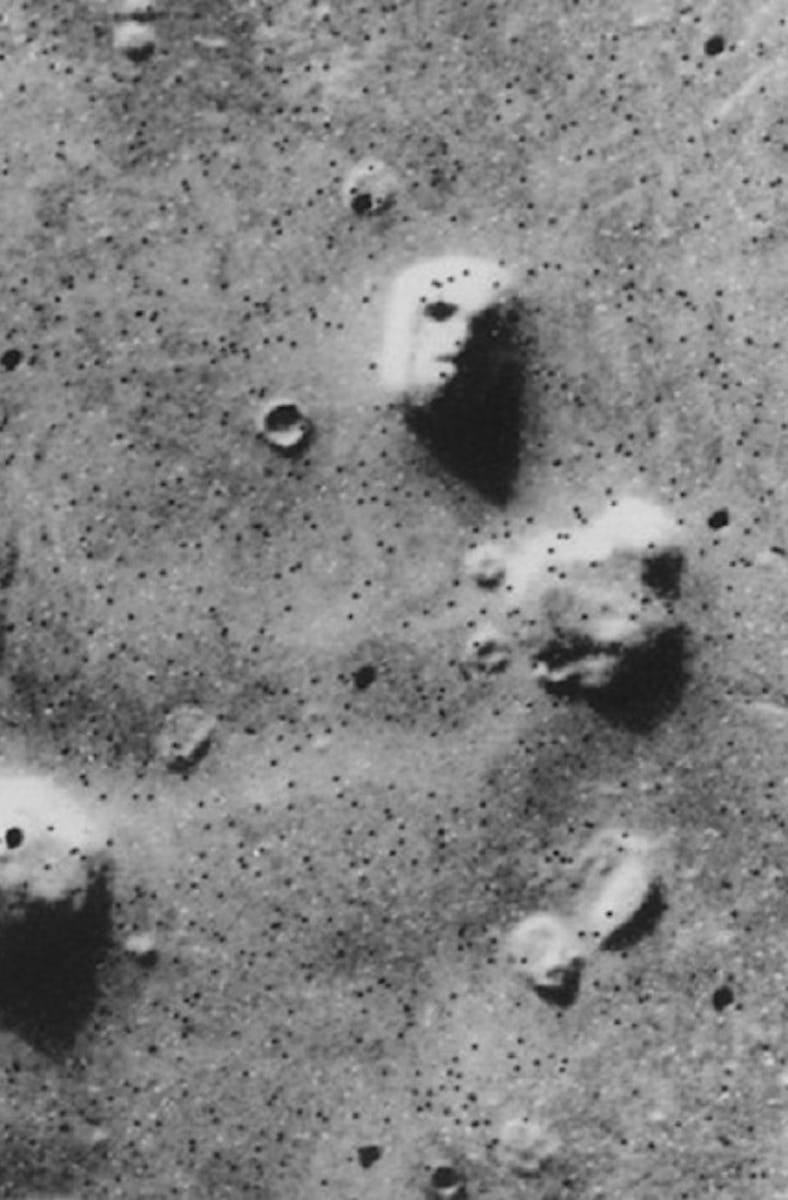This Martian Mesa Was Once The Center Of Alien Conspiracy Theories — The Real Explanation Is Even Weirder
There's no face on Mars, but the psychology behind the optical illusion may also have helped humans become artists.

A nameless mesa in a strange Martian landscape once stood at the center of a swirl of alien conspiracy theories.
In a low-resolution snapshot from NASA’s Viking 1 spacecraft, taken in 1976, the brightly lit ridges and darkly shadowed dips in the terrain atop the mesa formed a weirdly compelling optical illusion: a grim, black-eyed face staring back at us from Mars. Conspiracy theorists insisted the mesa must have been the work of alien sculptors. But it turns out that if you see the mesa in more detail and in different lighting, the stark contrasts of light and shadow that originally formed the face completely disappear.
But the “face on Mars” is a great example of the same phenomenon that may once have inspired early humans to draw some of the first art on cave walls here on Earth.
Spot the face! (That’s a hilarious joke, because an imaging error caused this photo to be spotted with little black specks.)
Face? Off.
The SETI Institute recently shared a blast from the past: an image from NASA’s Mars Global Surveyor satellite, which snapped an image of the famous “Mars face,” revealing a discouraging lack of alien megaliths or slumbering giants.
In the original image, from Viking 1, with a low resolution of about 164 feet per pixel, the mesa shows up in stark patterns of light and shadow, creating the illusion of dark eyes in a pale face – one that looks unsettlingly like a death mask.
But seen in more detail at 6.6 feet per pixel, and with the Sun shining down from a different angle in the Martian sky, the facial features came into focus as weathered ridges of rock. If you know what you’re looking for, you can still trace the outline of the illusion on the top of the mesa and think to yourself, “Okay, I see how that weird dip in the ground looks like an eye in the right lighting,” but it’s also easy to tell the face isn’t really there.
This is the same mesa from the Viking 1 image, shown in much higher resolution (and with the sunlight coming from the lower left instead of the upper left). The face vanishes!
Nobody carved this two-mile-long mesa into the shape of a very spooky face. It’s just an example of a very ancient quirk of the human mind called pareidola. The phrase refers to our tendency to see faces and other familiar shapes in random patterns, like clouds, rock formations, or the stars in the night sky.
A recent study, published last week in the Cambridge Archaeological Journal, suggested that paraidolia may have provided some of the inspiration for humanity’s first artworks on cave walls. Archaeologist Izzy Wisher and her colleagues found that more than half the Paleolithic images drawn on cave walls in northern Spain — some dating back 40,000 years — included natural features of the cave wall in the shapes they depicted. A curved section of rock, viewed in a flickering firelight at just the right angle, might look like a bison’s back, and that image might have inspired an ancient person to draw the rest of the animal, for example.
“However, whilst our study showed that pareidolia did have some influence on the cave artists, this was not always the case, giving us a fascinating insight into the work of these early painters,” says Wisher in a recent statement. “It seems to us that their art may have been part of a ‘creative conversation’ with the cave walls, where they both took inspiration from what they saw in the cracks and shapes of the cave wall but also used their own creativity.”
There’s still another famous face on Mars: a smiley face traced by mountain ranges in Galle Crater (not to be confused with Gale Crater, home of NASA’s Curiosity Rover) and made famous in The Watchmen. That one is really there, but the iconic smiley face is a great example of pareidolia in its own right, since the mind is managing to make a face out of two dots and a curved line.
And if you’re still wondering how we connected The Watchmen, ancient cave art, and an optical illusion on Mars, the word you may be looking for is apophenia.